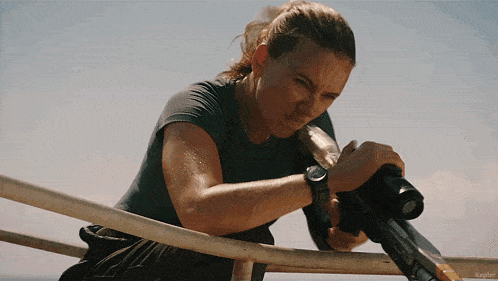Exciting New Releases: ZD Toys Collection
Exciting New Releases: ZD Toys Collection

From Hybrid Horror to Ocean Predators: Every Dinosaur Reveal in Jurassic World Rebirth
May 06, 2025 7 min read
Prepare for a thunderous return to the world of dinosaurs as Jurassic World: Rebirth storms into theaters on July 2, 2025. Directed by Gareth Edwards, the seventh installment in the iconic franchise doesn’t just revisit the past—it reshapes it.
This time, the spotlight shines on Titanosaurus, a colossal new breed of Mosasaur, and a fearsome mutated D-Rex, unlike anything seen before. These titanic newcomers will share the screen with legendary favorites like the Velociraptors, T-Rex, and the venom-spitting Dilophosaurus—now redesigned with new behaviors and terrifyingly realistic detail.
The story plunges audiences into a high-stakes mission where scientists and mercenaries venture into a mysterious, untouched island, risking everything to extract DNA from the three largest dinosaurs ever discovered. But this isn’t just a return—it’s an evolution.
Rebirth introduces a fresh cast of human characters navigating a thriving new dinosaur ecosystem, full of danger, wonder, and genetic secrets waiting to be unearthed. With a balance of nostalgia and innovation, this film promises to expand the Jurassic legacy in bold new directions.
In this article, we dive deep into the dinosaurs confirmed for Jurassic World: Rebirth—from the beloved classics to the terrifying new species making their cinematic debut.
Titanosaurus – The Towering Marvel of Jurassic World: Rebirth

Making its awe-inspiring debut in Jurassic World: Rebirth, the Titanosaurus emerges as the largest sauropod ever witnessed in the franchise—a breathtaking titan that channels the same sense of wonder evoked by the Brachiosaurs in the original Jurassic Park.
Seen for the first time in the film’s trailer, the Titanosaurus is no ordinary longneck. Towering above the trees with an elegant yet imposing presence, its design sets it apart: massive fins crown its back and head, while a long, whip-like tail trails behind, hinting at power, grace, and mystery. This is not just another dinosaur—it’s a new icon in the making.
The creature’s distinctive fins may be more than just artistic flair—they’re likely a subtle nod to another legendary beast: Godzilla’s Titanosaurus, who shared similar features. It’s a fitting tribute, considering director Gareth Edwards not only helmed 2014’s Godzilla, but helped launch the modern MonsterVerse. His signature touch—blending awe with scale—clearly leaves its mark here.
Like many of its Jurassic cousins, this Titanosaurus may be the product of genetic patchwork, filling the gaps in ancient DNA with the traits of modern animals. The result? A creature both prehistoric and futuristic—a living monument to the ambition and danger of playing god.
The Titanosaurus doesn’t just walk onto the screen—it commands it.
The Two-Headed Velociraptor – Evolution Gone Rogue
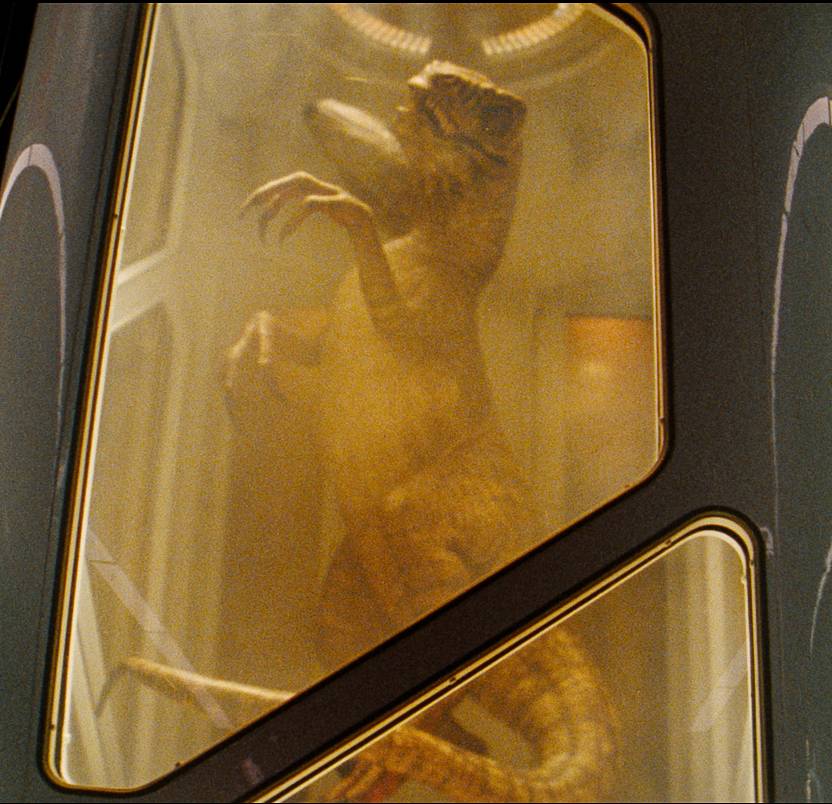
They were once the silent stalkers of the jungle, swift shadows that haunted the dreams of a generation. Now, they return—deadlier, stranger, and more terrifying than ever.
Making their unnerving appearance in Jurassic World: Rebirth, the Two-Headed Velociraptor marks a chilling new chapter in the evolution of these iconic predators. These aren’t the raptors you remember. With a grotesque dual-headed mutation, they evoke the horror roots of the original Jurassic Park—a time when the Velociraptor wasn’t a misunderstood creature, but a nightmare with claws.
Once elevated to near-hero status in the recent trilogy, portrayed more like fierce but trainable animals, the raptors are now stripped of familiarity. Born in isolation, with no exposure to humans, this new strain feels primal, unfiltered, and hostile. Their intelligence remains—but twisted. Their coordination—deadly. And now, their appearance is something out of a genetic fever dream.
It’s no secret that Jurassic’s Velociraptors have always been a far cry from their real-world counterparts. In reality, they were feathered creatures no bigger than turkeys. But the version cemented in pop culture—larger, sleeker, and more terrifying—was inspired by their cousin, Deinonychus. Rebirth takes that cinematic fiction and pushes it into the realm of sci-fi horror, merging DNA, mythology, and menace into something wholly new.
In the silence of the lab, in the glow of containment glass, one truth is clear: we never truly knew what a raptor could become.
Quetzalcoatlus – The Sky King Returns, Reforged

Soaring through the misty skies of Jurassic World: Rebirth is a shadow of ancient terror and majesty—the Quetzalcoatlus, reimagined, reengineered, and more formidable than ever.
Though the name isn’t officially spoken in the film, fans and paleontologists alike recognize the sheer scale of this winged titan. The largest flying reptile in history, its wingspan dwarfs even the most massive predators of land and sea, making it the natural candidate for the aerial apex DNA target in the characters’ mission to extract genetic material from the three largest creatures across the biosphere.
But something is different.
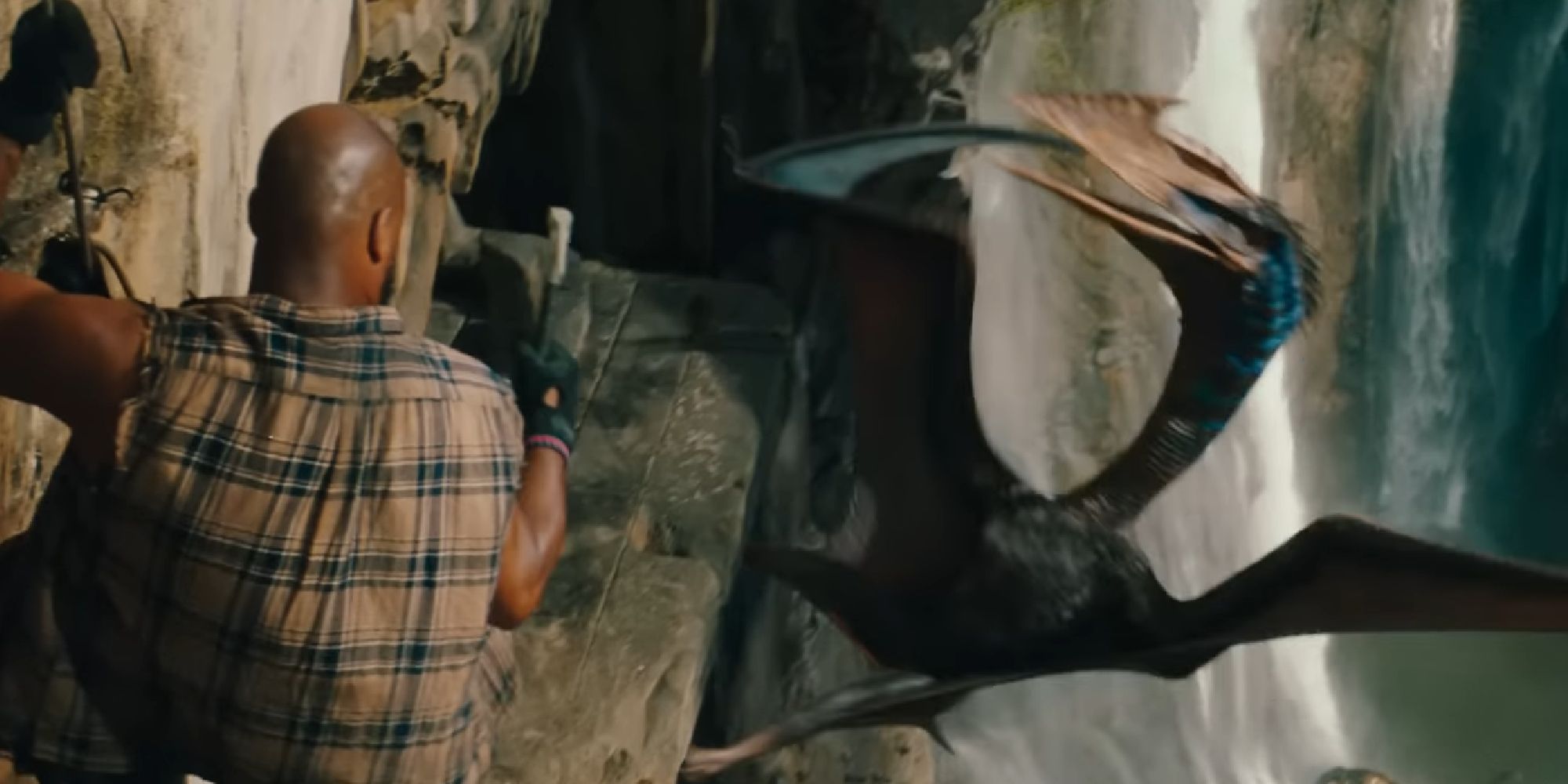
This Quetzalcoatlus looks nothing like the one first introduced in Jurassic World Dominion. The colorations are richer, the build more aggressive, and the head crest sleeker, almost weapon-like. This isn’t a continuity error—it’s evolution by design.
The theory? The Dominion version was a BioSyn creation. This one—this sky-hunter—is likely an InGen-engineered variant, tailored not just to fly, but to dominate. Whether born of creative liberty or narrative intent, this new form speaks to InGen’s legacy of playing god with prehistoric life—remixing ancient DNA with modern ambition.
Dilophosaurus – The Phantom of the Jungle Returns

Dilophosaurus made its unforgettable debut in Spielberg’s original Jurassic Park, taking out Dennis Nedry with a frill, a hiss, and a faceful of venom. Then, it vanished—gone for three decades, until Jurassic World: Dominion.
But now, in Jurassic World: Rebirth, the hunter returns in a new avatar.
No longer a one-off monster, the Dilophosaurus creeps back into the spotlight, signaling a clear shift in tone—a revival of the primal fear that once defined the franchise.
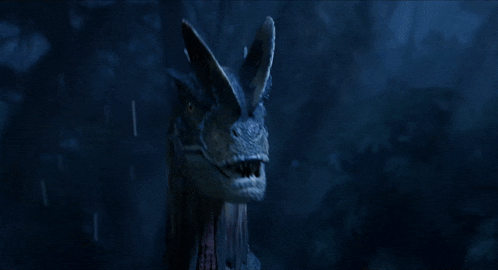
Longtime fans have speculated whether the original was merely a juvenile, given that real-world Dilophosaurs were far larger, sleek, towering predators that bore more resemblance to a pack hunter than a pint-sized terror. And in Michael Crichton’s novel, it was exactly that.
Still, the filmmakers chose legacy over literalism. The distinctive neck frills—a creative liberty—and that horrifying venom spit, while biologically unfounded, have become the stuff of nightmares. The result? A creature that doesn’t just kill but it'll also haunt you in your after life.
The Crowned Titan of the Jurassic Saga- Tyrannosaurus Rex
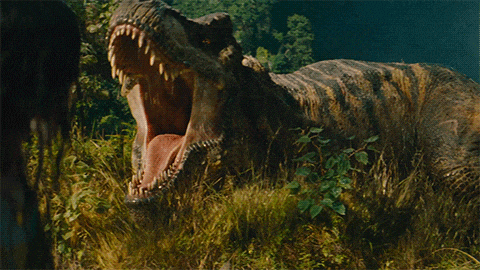
There’s no Jurassic without the T Rex. She is a legacy, a roar that echoes through cinema history, from the first thunderous appearance in 1993’s Jurassic Park to every new chapter that dares to follow.
So when Jurassic World: Rebirth arrives, it’s no surprise that the king returns. But this isn’t Rexy, the battle-worn matriarch fans have come to worship. No—this is a new monarch, a fresh take on the apex predator with altered patterns, colors, and a striking absence of the iconic scars that marked Rexy’s survival.
Some fans mourn the shift—but others are thrilled. Especially those who remember the original Michael Crichton novel, where a certain T-Rex river pursuit—tense, relentless—never made it to screen. Until now.

Jurassic World: Rebirth appears to resurrect that lost sequence, paying tribute to the story that started it all while carving out new ground. That chase down the river, teased in the trailer, is more than action—it’s redemption for an idea that was too bold for 1993, but just right for now.
Spinosaurus: A Well Deserved Comeback for Jurassic Park 3 Fans

Despite its controversial showdown with the T-Rex in Jurassic Park 3, the Spinosaurus remains a fan-favorite among dinosaur enthusiasts. Fast forward to Jurassic World Rebirth, and the Spinosaurus has made a triumphant return. This time, it’s not one but three Spinosaurs working together as a pack to protect a Mosasaur, proving that they are just as deadly in the water as they are on land.
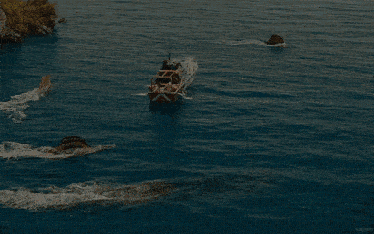
In Jurassic World Rebirth, these creatures sport a fresh look, with faces resembling the Baryonyx and more angular fins on their backs. The reason for these design changes ties back to the evolving understanding of Spinosaurus in the scientific community. In the universe of Jurassic Park, it’s revealed that the Spinosaurus from Jurassic Park 3 was a failed hybrid experiment, a nod to the real-world discoveries by paleontologists. Over the years, these discoveries have reshaped our view of Spinosaurus, making the version seen in Jurassic Park 3 feel outdated by today’s standards.
Mosasaur and Spinosaurs Team Up
The marine reptile that steals the spotlight in Jurassic World Rebirth seems to be a Mosasaur, but it’s far from a straightforward case. This creature is seen working alongside a pack of Spinosaurs. However, there’s some mystery surrounding its exact identity. Unlike the Mosasaurus from Jurassic World, this one is noticeably smaller and sports a shark-like tailfin that rises out of the water, whereas the Mosasaurus had a distinct, crocodilian tail.
Could this be just a design update? Perhaps. But the combination of the creature’s snout shape and that unique fin points to a potential clue: this might actually be a Tylosaurus. First introduced in Jurassic Park: The Game, the Tylosaurus has appeared in various Jurassic Park media, including Jurassic World Evolution 2. The design seen in the trailer for Jurassic World Rebirth bears a strong resemblance to its previous appearance, making this theory all the more likely.
Either way, this marine reptile is a captivating addition to the Jurassic world, and its partnership with the Spinosaurs raises even more questions about the dynamic between these prehistoric creatures.
Mutated Rexy: Distortus Rex
First Appearance: Jurassic World Rebirth

While the strange, mutated dinosaur glimpsed in the Jurassic World Rebirth trailer has finaly received an official name and fans have already coined it the “D-Rex.” This creature is an unsettling sight, walking on four legs with a bulbous head and a small mouth lined with sharp teeth. Since the island in the film is described as a testing ground for the original Jurassic Park, there's a fascinating possibility: this mutant might be the failed "older sister" of Rexy, the iconic T-Rex from the earlier films.
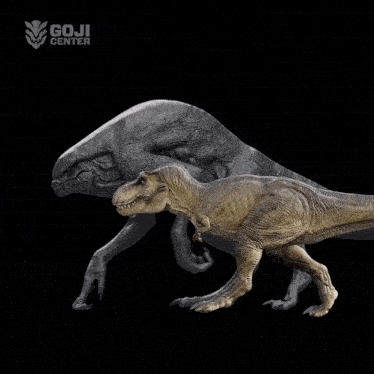
Director Gareth Edwards has shared that the inspiration for this mutated dinosaur draws heavily from the Rancor of Star Wars and the terrifying Xenomorph from Alien, with a T-Rex twist. The resemblance to the Rancor is clear, but fans are particularly eager to discover how the Xenomorph influence manifests when the movie releases in 2025. There's definitely a sense that this creature will bring a whole new level of menace to the Jurassic world—blending familiar, frightening elements with a disturbing twist.
As we look ahead to Jurassic World Rebirth, it's clear that the franchise is taking bold steps to evolve its prehistoric creatures in thrilling new ways. Whether it's the return of the Spinosaurus, the mysterious marine reptile, or the terrifying new mutant D-Rex, fans have plenty to look forward to. With fresh designs, exciting storylines, and a deeper dive into the science and chaos behind the park's experiments, Jurassic World Rebirth promises to bring a whole new level of adventure and danger. Be sure to stay tuned as we await the thrilling next chapter in this iconic saga, coming in 2025!
Calling All Jurassic Fans!
Don't miss out—visit our website now for up to 40% off all Jurassic World statues, action figures, and toys! Stock is limited, so act fast! Click Here to Avail the Offer.
Subscribe
Sign up to get the latest on sales, new releases and more …

